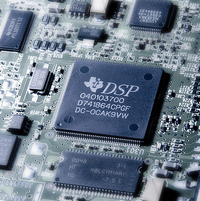After half a century, the revolution in computer technology continues to rapidly transform the world about us. For reasons that are fundamentally economic, the atomic building blocks on which that revolution is based are semiconductor electronic components -- chips. It has been estimated that technological improvements in semiconductors accounted for 40 percent to 60 percent of the price-performance improvement in computers in the late 1990s. Those rapid declines in computer prices in turn led to much wider usage of computers and significant improvement in U.S. productivity growth during the same period.
The first electronic digital computers used during World War II to crack enemy codes, calculate artillery firing tables, and design the first nuclear weapons were massive aggregations of expensive, fragile, bulky, unreliable, and power-hungry vacuum tubes. The postwar invention and refinement of the transistor made it possible to replace these early computers with more inexpensive, compact, reliable, and lower-power versions. At the end of the 1950s, the development of the first integrated circuits (ICs) in the U.S. meant that a complete section of circuitry for a computer -- including not just transistors, but other electronic components and their interconnections -- could now be put on a single silicon chip. The first ICs produced in volume were designed for use in guidance systems for U.S. ICBMs. In the mid-1960s, the use of lower-cost ICs, using technologies perfected on defense-funded production lines, spread to the commercial computer models used by businesses, laboratories, and universities.
The story of how Cold War defense investments, which provided the U.S. military with a critical qualitative technological advantage, subsequently spilled over to commercial U.S. high-tech industries, thereby powering the postwar rise in American productivity and living standards over the final decades of the last century -- as well as the global economic dominance of these industries by the U.S. -- is by now a well-documented one. What is less-appreciated is that the same economic dynamic that drove semiconductors into computers, and then pushed computers into every other aspect of modern life, continues unabated after 50 years now.

